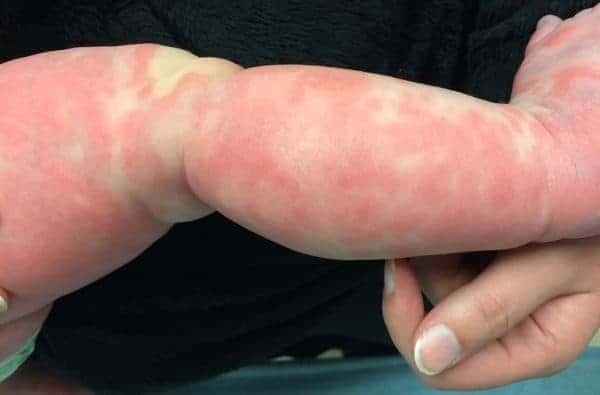Serum sickness

Serum sickness, using the name “serum allergy”, refers to the group of allergic diseases. Its development is the result of hypersensitivity of the body to proteins of foreign origin that have entered it.
Most often, a reaction occurs when introducing heterologous proteins, that is, from other biological species /animals/ and less often homologous /human/.
Usually, serum is introduced into the body for prophylactic or therapeutic purposes in various infectious diseases.
And inasmuch as each serum contains foreign proteins in its composition, when it is applied, the body may react in the form of serum sickness.
Manifestations of this type can occur as a result of administration of anti-tetanus, measles, and other serum-containing injections.
Today, since all medicinal preparations are now produced with increasingly advanced technologies and are therefore of a higher degree of purity, in practice, medications no longer cause serum allergy.
Therefore, with each passing year, the number of people who get this type of allergic reaction is getting smaller and smaller.
Also, to reduce the risk of the occurrence of this disease, doctors try, as far as possible, to use alternative preparations that have the lowest degree of reactogenic activity.
What are the symptoms?
The degree of intensity of the symptoms and manifestations of serum allergy in most people varies – from the most insignificant and hardly noticeable to anaphylactic shock, in which if a person does not seek medical help in time it is possible and fatal outcome.
In the first stages of its development, serum sickness is manifested by redness and the appearance of a rash on and around the skin surfaces where the serum was introduced.
When the allergic reaction progresses, the symptoms turn into whole combinations of systemic signs.
Redness and rash are accompanied by characteristic intense and persistent itching. Over time, the rash can take on different forms that are similar to those of measles and scarlet fever.
Sometimes the serum sickness rash can be mistaken for an immune system reaction triggered by contact with toxic allergens such as contact dermatitis.
In its mild forms, serum allergy can manifest itself with a local increase in temperature, and in more severe cases with a rise in the temperature of the whole body.
The affected joints in this disease swell and swell, pain of varying intensity may appear in these areas, depending on the phase of the serum allergy.
Lymph node enlargement is also characteristic of serum sickness, but this process goes almost unnoticed, as enlarged lymph nodes are not painful.
Serum sickness may cause cardiac and respiratory failure. In such cases, cough and shortness of breath appear, the skin and mucous membranes turn blue, those affected vomit and have diarrhea.
The disease can also affect the liver, which is manifested by yellowing of the skin and impaired digestion.
Treatment of serum sickness
When an accurate diagnosis is established, medicinal preparations with an antihistamine effect on the body are prescribed. In more acute and complicated course of the disease, adrenaline preparations and corticosteroids are included in the course of treatment.
When the cardiovascular system and respiratory tract are affected, oxygen therapy is administered and artificial ventilation of the patient’s lungs is performed.
In acute attacks of the disease, resuscitation measures are carried out.



